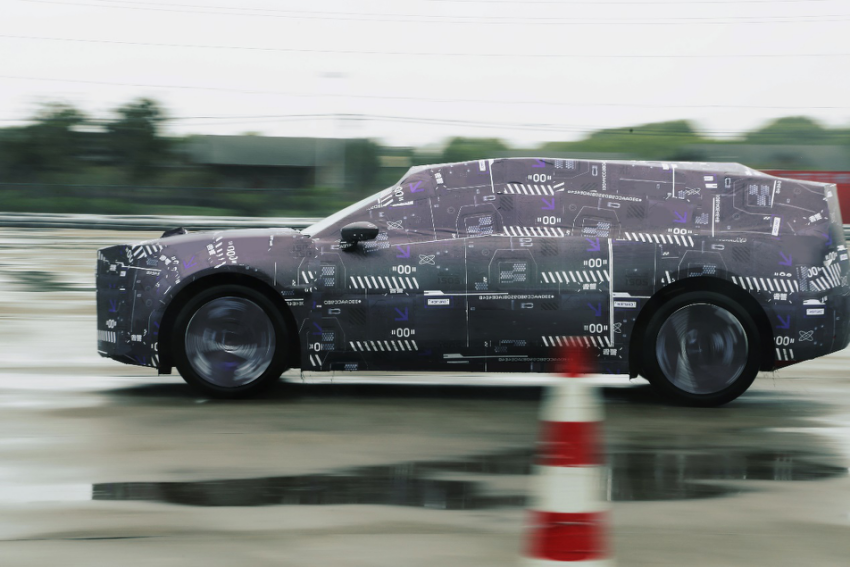*This article is reproduced from the autocarweekly WeChat official account.
Author: Karakush
It seems that I have recently watched “Dune” twice.
One time in Xintiandi, watched it in 3D. Don’t go watch it in 3D.
The other time was in Hongqiao Tiandi, at the Jidu Shanghai office, watching their technical communication meeting—not “Dune”, but something like “Dune” because there is no sequel, so it is a bit difficult to understand what the story is now.
The movie only covers two-thirds of the first book of the original work. There are six books in the main series alone. Jidu has progressed to the dynamic testing stage of SIMUCar.
SIMUCar is the abbreviation of Jidu’s Software Integration Mule Car.
“Mule Car” is something you all know, and it is usually used as a sample car for initial validation and calibration of powertrain and chassis research and development from project initiation to scheme confirmation stage. According to the traditional timeline, there are still simulation sample cars, engineering sample cars, verification-built cars, process sample cars, pre-production trial runs, trial production…before mass production.
Jidu has put on an “SI” vest, which is different from the ordinary mule. Traditional mule cars focus on powertrain and chassis, because this is the core of traditional fuel-powered vehicles, and the development cycle is longer, needing to be involved in testing early in the project.
However, for intelligent electric vehicles, the proportion of software in the car is getting larger and the complexity is also increasing. Based on the logic of traditional fuel-powered vehicles, it is not very suitable to develop the chassis first and then the software.
Therefore, SIMU Car was created. In order to develop software, Jidu adjusted the electrical and electronic architecture of the basic car and simulated the entire vehicle environment, allowing Baidu Apollo and Jidu engineers to conduct software development and verification that originally could only be done in the whole vehicle stage at an early stage of the project, including core algorithms, communication networks, and the SOA established for service-oriented architecture.
In summary, it decouples software and hardware development, significantly advances (and extends) the development time of the intelligent cockpit and intelligent driving. Therefore, by the time of delivery, these intelligent functions have a great opportunity to be delivered to users together, rather than still being marked with “to be upgraded through OTA” one or two years after delivery.
From this point of view, the ability to be intelligent is indeed placed in a critical position. It is also not surprising that Jidu believes that it is the “chosen one” of the era of intelligent cars.
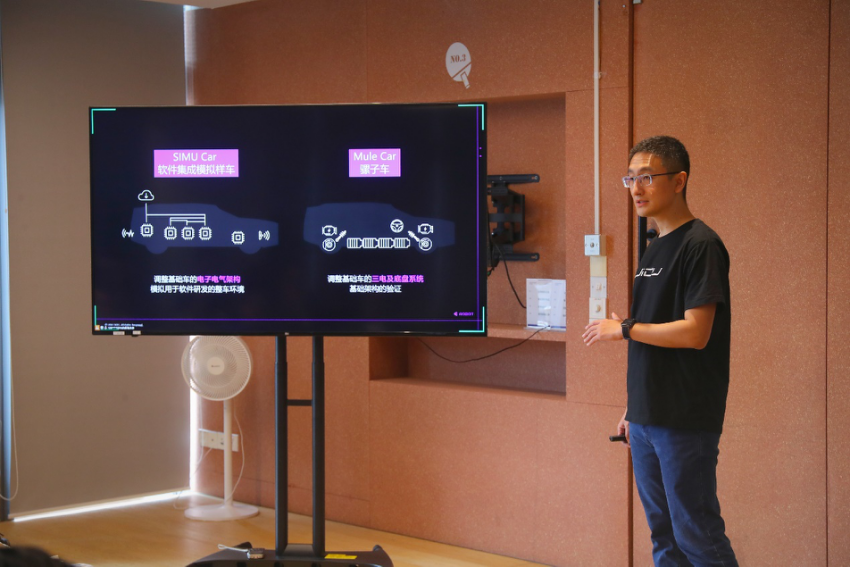
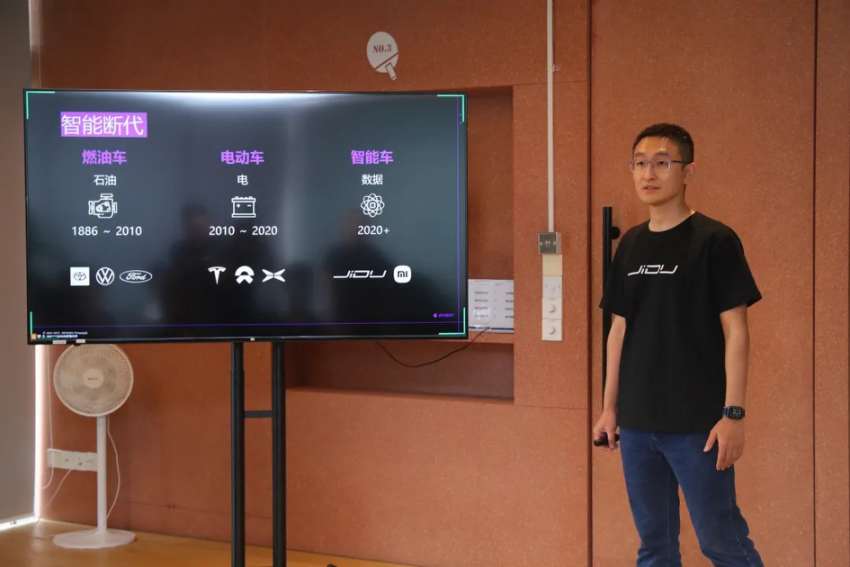 # Professional Translation
# Professional Translation
The difference is rooted in the transfer of core competitiveness. In the next decade, the smart car era will be driven by data-driven technology optimization. This will be more profound after the product SOP. Compared with the engineer-driven capability improvement during the R&D stage, the SOP will be user-demand-driven and driven by AI and big data for rapid self-evolution.
However, just like many viewers’ impressions of movies, even if there is a grand architecture, the lack of decent events to complete the arc makes the whole film appear to be a disconnected time segment.
JD is also in a time segment of 0-1. Software is still software, and for many industry friends, it is like today’s hot search: Feng Shaofeng has grown a beard—can this also be considered a thing?
Objective reviews reveal true knowledge.
Since the “electric car era”, several competitors have also emphasized their progress on Mule Car, such as LeTV announced completing Mule Car in just ten months in 2015, XPeng announced completing Mule Car 5000 km test in the same year, and NIO completed testing of ES8 Mule Car the following year. These are legendary speeds that exceed the industry average.
But JD has to be faster. They were established in March this year, and they have only been working on the SIMU Car for half a year. In early March, the team only had four or five people. By the first press conference in June, they had built the core team, and the official staff had reached 100. Now, they have exceeded 600 people.
Regardless of development speed or overall growth, they have exceeded the three generations of existing car companies. Hard to say, this is also equivalent to a master’s stroke like Viller Neuve, and the narrative efficiency of “Dune” is high, basically explaining several complex core settings and laying the groundwork for the next development.
JD is the same. The SIMU Car not only replaces the original Mule Car process but JD has also planned the ability development loop around the SIMU Car development model.
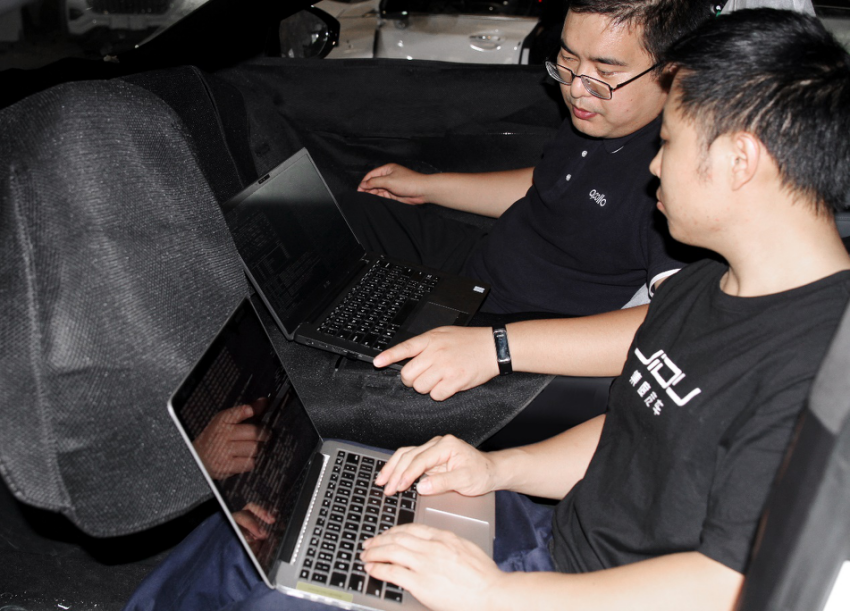
Currently, it’s SIMU1, focusing on the basic ability development of intelligent assisted driving, including the development of software architecture and related basic functional logic and adapting it to the chassis. It is expected to have basic intelligent assisted driving functions in some urban and highway domains by the end of the year, which will take about three months.Then go to SIMU2 to quickly improve core skills, and the whole vehicle will undergo an upgrade to have electronic and electrical architecture targeted for L4, including the core computing platform and related sensors reaching the production stage. Beyond hardware, Jidu will pay more attention to the core of autonomous driving, including basic ADAS capabilities, parking capabilities, intelligent interaction capabilities, and basic point-to-point autonomous driving, all of which will reach the production stage at this stage.
During the mass production car verification phase, professional skills will be further increased and self-learning abilities will be cultivated. At this time, the software system will be officially coordinated with the entire vehicle, and targeted capabilities will be polished for more extensive scenarios, gradually endowing the system with self-learning/evolving capabilities.

According to the timetable Jidu previously announced, their concept car will debut at the 2022 Beijing Auto Show, almost reproducing the production-ready state. Small orders will be opened at the end of next year with an estimated price of no less than RMB 200,000. From this point on, Jidu has to start promoting, even if only at 0-1 progress.
Technologically, it presents an impressive appearance. Standing on the shoulders of giants, Jidu’s intelligent driving is based on Baidu Apollo’s ANP system, which includes technology, scenarios, and data as core capabilities to empower Jidu.
Baidu Apollo has been at the forefront of autonomous driving technology globally, although consumers have not sensed much about it because of the absence of commercialization of passenger vehicles over the years. However, the accumulation is real. Baidu has accumulated more than 18 million kilometers of test miles and is still rapidly increasing.
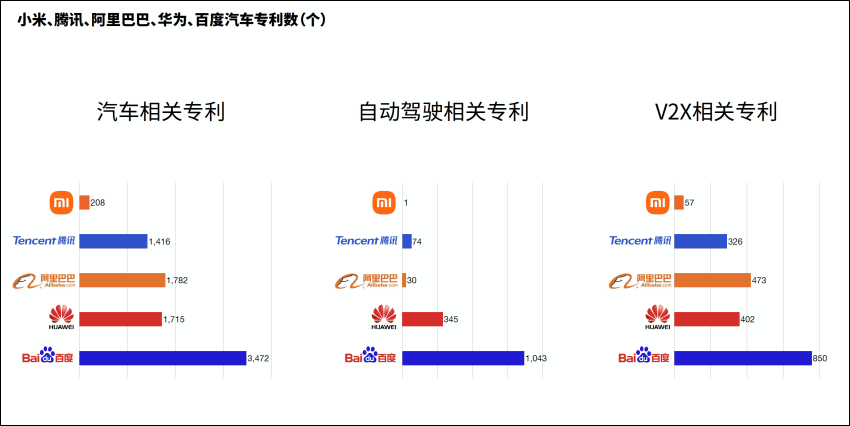
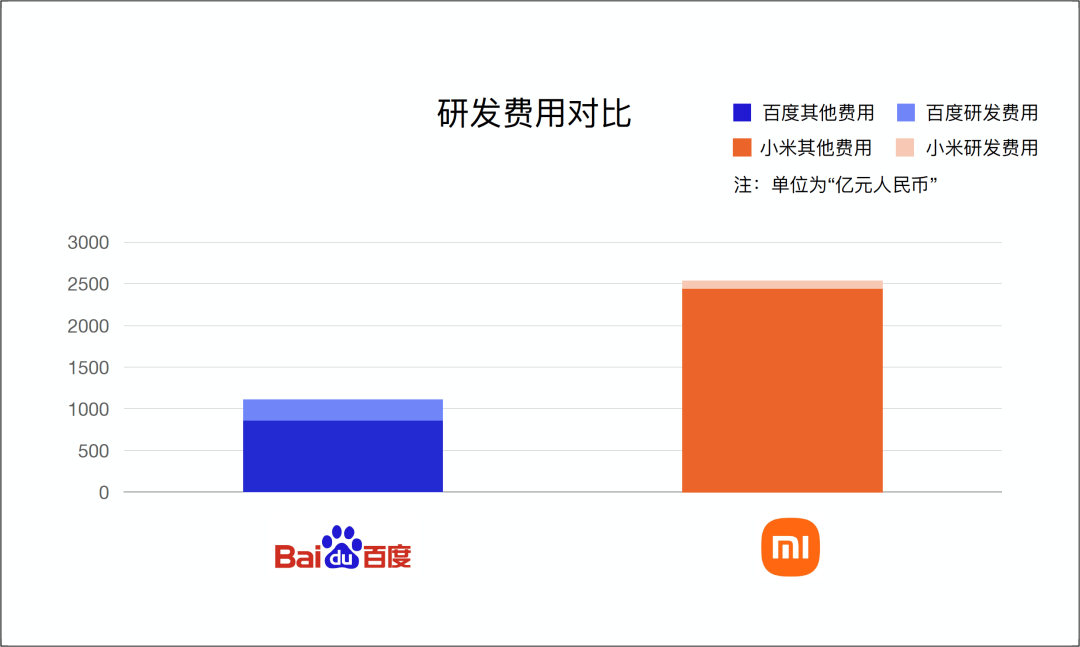
Jidu will carry the latest L4 level autonomous driving capabilities from Apollo. Until mass delivery, Jidu will continue to iterate granularly every week with Baidu Apollo team. It’s a deep collaboration. Although operationally independent, it’s as intimate as the relationship between Xiaomi’s smart car and Xiaomi.
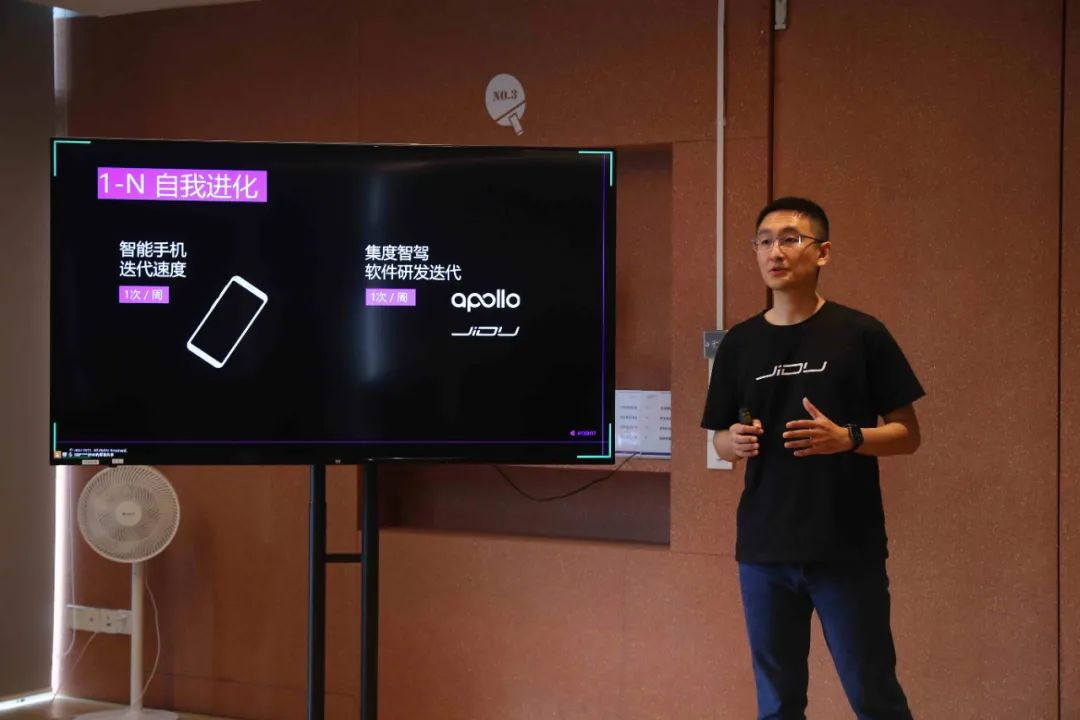
At the hardware level, Jidu will be equipped with the strongest computing power in the industry and redundant design will be adopted in the architecture, with cameras, millimeter-wave radar, and lidars. This plan is not surprising: at the current technological level, perception is still the most difficult point for autonomous driving.## Translation
So, what is Jidu doing with Baidu software and supplier hardware?
According to Dr. Wang Weibao, Head of Smart Driving at Jidu, the source of tools or general technology is either self-developed or third-party, and essentially there is no difference. The greater difference lies in what kind of product you want to make. Based on this product concept and driven by data, the entire product concept will be different for each person based on their different data, and the final product form and experience will also be different.
Therefore, the biggest difference of Jidu lies in its product definition. They aim to build an “automotive robot”.
Jidu repeatedly emphasized this high-level concept, but so far, due to the pace of publicity, no specific related definition has been released. We only know that this automotive robot will have the ability of autonomous driving, automatic interaction, continuous iteration, and will continue to communicate with users, rather than being just a means of transport.
It’s very abstract and not well-known.
But it is precisely this concept that attracted Wang Weibao to join Jidu. The head of smart driving was born in 1988 and used to work for Apple’s Project Titan. The most profound inspiration for him during this working experience was not the specific project, but how to make a good product. From a technical perspective, it is about how to push consumers with different technical paths and solutions, to understand and accept what autonomous driving is.
Perhaps like “Dune”, many directors wanted to turn this series of novels into movies, but in the end, the series always became a graveyard for directors. It’s not just about adapting the text into audio-visual language, but about creating your own set of science fiction aesthetics – this is where consumers are ultimately convinced.
Of course, since Jidu hasn’t revealed anything specific, we have no idea what kind of automotive robot it is. It is unlikely to be like our stereotype of “robots”, who can wash dishes, massage feet or make money. As for how the real functions will be different, it is also difficult to depict.
Wang Weibao mentioned that there will be demonstrations of the two abilities of high speed and city by the end of this year, but this does not mean that there will only be these two abilities at the time of delivery. The specifics, well, we don’t know. Jidu is expected to have further explanations after discussing with the outside world at the end of this year.
“Dune 2” has been scheduled to be released in 2023; coincidentally, Jidu will also be officially delivered in 2023. Some friends may question whether the product definition in 2021 will become outdated by the time of delivery in 2023.See, today we are still marveling at sci-fi stories written 50 years ago, while some articles and videos released yesterday were already forgotten. Time has nothing to do with it.
This article is a translation by ChatGPT of a Chinese report from 42HOW. If you have any questions about it, please email bd@42how.com.
